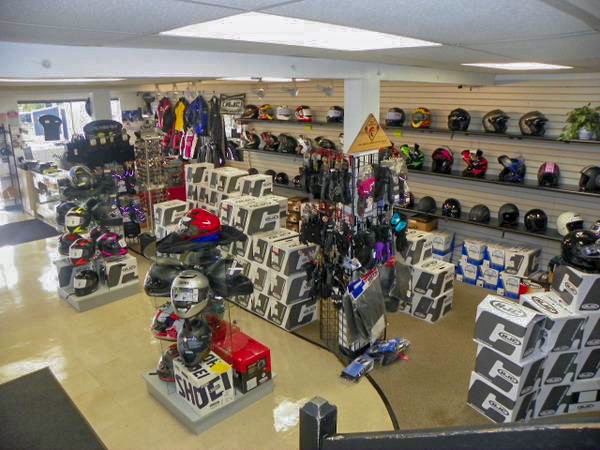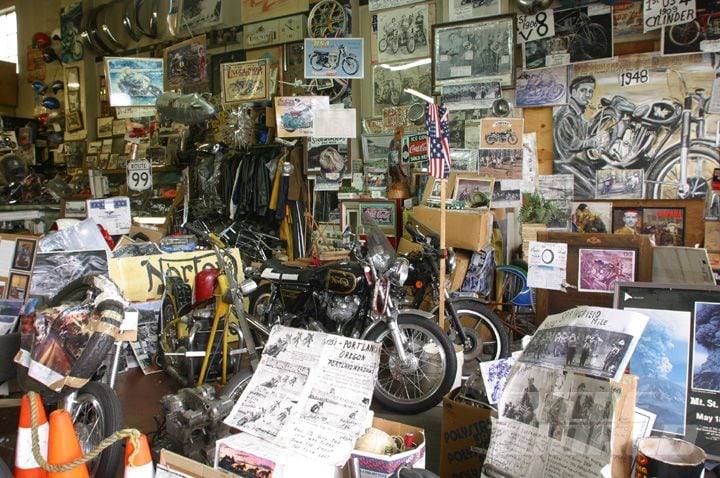Locate Competitive Rates on Motocross Parts NZ for Every Bike
Locate Competitive Rates on Motocross Parts NZ for Every Bike
Blog Article
Comprehending the Vital Parts of a Bike: A Comprehensive Guide for Fanatics
For motorcycle lovers looking to boost their riding experience and guarantee their bikes run smoothly, comprehending the crucial elements of a bike is vital. Each element, from the engine's elaborate operations to the important function of the braking devices, not only influences efficiency however also safety and security and convenience. This overview will stroll with the basic parts that every rider should recognize with, making it possible for informed selections in both upkeep and possible upgrades. As we begin this exploration, one must ask: how does each part interact to produce the smooth ride every enthusiast seeks?
Engine Components

The camshaft plays a crucial function in managing the timing of the engine's shutoffs, guaranteeing the accurate opening and closing needed for reliable fuel and air intake, in addition to exhaust expulsion. This timing is essential to maintaining optimal engine efficiency and efficiency. In addition, the carburetor or fuel injection system, depending upon the motorcycle version, is in charge of blending air with fuel in the proper ratio for combustion.
The air conditioning system, either air or liquid-based, works to keep the engine's temperature within functional limits, avoiding overheating and ensuring durability - motorcycle parts nz. Each part, thoroughly made and integrated, adds to the seamless operation of the engine, specifying the bike's power output and general efficiency
Transmission System
Indispensable to the motorbike's capability, the transmission system guarantees reliable power transfer from the engine to the wheels. This system comprises numerous essential elements, including the clutch, gearbox, and last drive, each playing an essential duty in converting the engine's power into movement. The clutch, normally run by a hand lever, offers to involve and disengage the engine from the transmission, enabling for smooth equipment adjustments and regulated acceleration.
The transmission, usually referred to as the transmission proper, contains a collection of equipments that riders can by hand change with to change the bike's rate and torque output. These equipments are organized in a series that allows the motorcycle to accelerate smoothly and keep optimum engine efficiency throughout different speeds. A lot of motorbikes utilize a consecutive gearbox, requiring the motorcyclist to shift gears in a predetermined order.
Braking Devices
While recognizing the transmission system is crucial to utilizing a motorcycle's power, equally crucial is the ability to regulate and stop that power successfully, which is where braking devices enter play. Brakes are vital for safety and security and performance, supplying the rider with the necessary control to navigate different surfaces and problems. Generally, bikes feature 2 kinds of braking systems: disc brakes and drum brakes.
Disc brakes are more common in modern bikes due to their premium efficiency. They consist of a brake disc, caliper, and pads. When activated, the caliper presses the brake pads versus the rotating disc, transforming kinetic energy right into heat, therefore slowing down the wheel. This system supplies better heat dissipation, consistent efficiency, and enhanced stopping power, particularly in damp problems.
Conversely, drum brakes, though much less common, are still found in some motorbikes. They function by pressing brake footwear versus the inner surface area of a drum affixed to the wheel. While usually much less efficient in warmth dissipation and quiting power, drum brakes are less complex and more cost-effective.
Comprehending more helpful hints these braking systems' nuances allows cyclists to keep their bikes appropriately and appreciate the design that ensures secure and reliable quiting.
Suspension and Steering
Suspension and steering systems are crucial elements that considerably affect a motorcycle's handling and experience comfort. The suspension system, containing forks at the front and shock absorbers at the back, takes in roadway irregularities, improving stability and control. Front forks, inverted or generally telescopic, compress and rebound to alleviate influences, while rear shock absorbers maintain tire call with the roadway, crucial for traction and security.
Guiding, focused around the handlebars, attaches the motorcyclist to the bike's directional control. The guiding head bearings make sure smooth operation, enabling precise maneuverability. Correct alignment and upkeep of these bearings are critical for foreseeable guiding action and minimizing motorcyclist exhaustion.
The suspension's adjustability is another vital facet; preload, damping, and rebound settings allow modification to fit various riding conditions and designs. This versatility is top article vital for maximizing performance, whether browsing metropolitan streets or taking on sturdy trails. Advancements like electronic shock absorber offer real-time modifications, boosting trip top quality across diverse terrains.

Electric Systems
After making sure a regulated and smooth experience with reliable suspension and guiding systems, focus transforms to the electrical systems, a critical facet of modern bikes. These systems play a critical role not just in beginning the engine however also in powering numerous parts that enhance the performance and security of the motorcycle.
At the heart of a motorcycle's electrical system is the battery, which stores electric power essential for beginning the engine and powering auxiliary systems - motox parts nz. The alternator or generator, coupled with the rectifier-regulator, guarantees the battery stays billed while the motorcycle is in procedure, transforming power right into electric energy and maintaining voltage degrees
The ignition system, an additional important part, is in charge of igniting the air-fuel combination in the engine's cyndrical tubes. Modern motorbikes frequently use a digital ignition system, using better efficiency and dependability contrasted to typical systems.
Illumination systems, including fronts lights, tail lights, and signs, are additionally important, making sure exposure and security for the motorcyclist. Additional digital parts such as sensing units, control devices, and presents add to sophisticated features like fuel injection administration, anti-lock stopping systems (ABDOMINAL MUSCLE), and digital dashboards, better boosting the riding experience.
Conclusion
An extensive comprehension of a motorcycle's necessary components, including the engine, transmission system, braking mechanisms, suspension, guiding, and electric systems, is essential for enthusiasts aiming to enhance safety and security, comfort, and performance. Proficiency of these components permits notified decisions relating to maintenance and upgrades, inevitably enhancing the riding experience. By integrating this knowledge, cyclists can guarantee their motorbikes run at peak efficiency and reliability, thereby optimizing both look these up pleasure and long life of their automobiles.
For motorbike fanatics looking to boost their riding experience and guarantee their bikes run smoothly, understanding the necessary components of a motorcycle is vital.Integral to the bike's capability, the transmission system guarantees reliable power transfer from the engine to the wheels.While understanding the transmission system is key to harnessing a bike's power, equally important is the capability to manage and stop that power properly, which is where braking devices come right into play. Usually, motorbikes feature two types of stopping systems: disc brakes and drum brakes.
An extensive understanding of a bike's vital parts, including the engine, transmission system, stopping mechanisms, suspension, guiding, and electrical systems, is crucial for lovers aiming to optimize safety and security, performance, and comfort.
Report this page